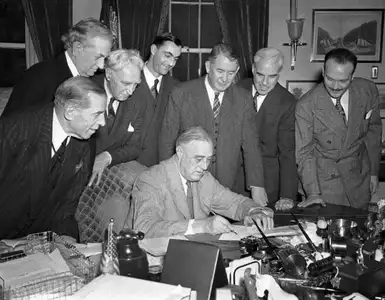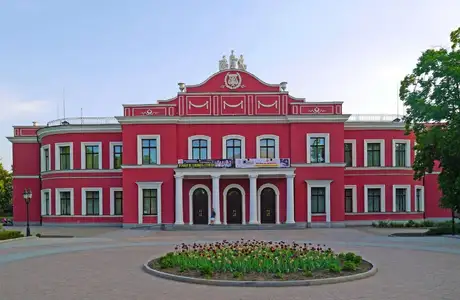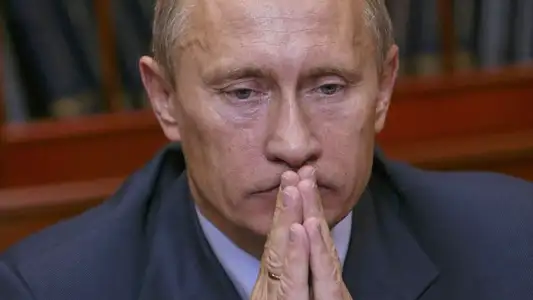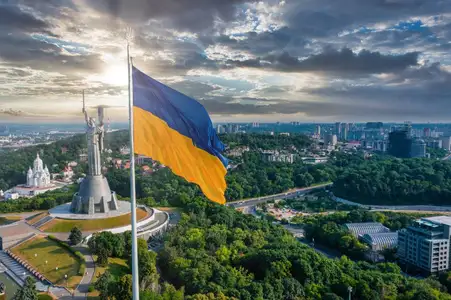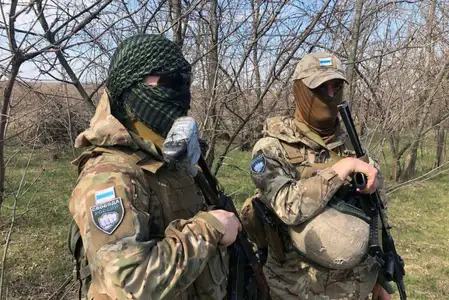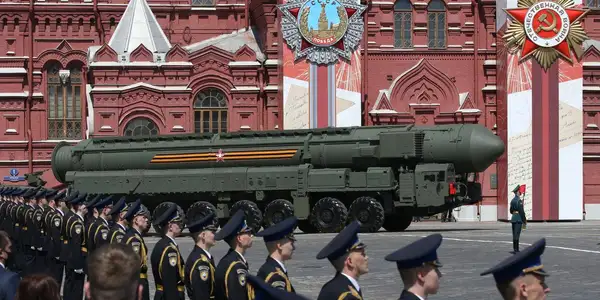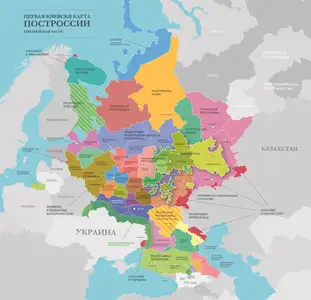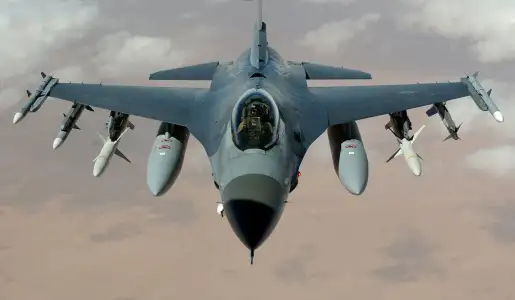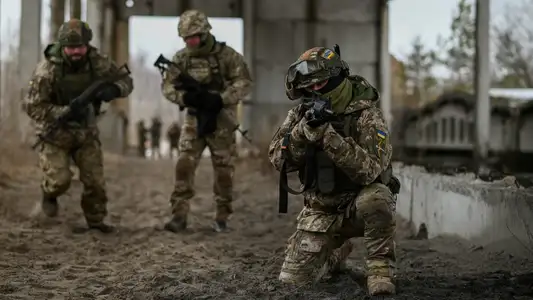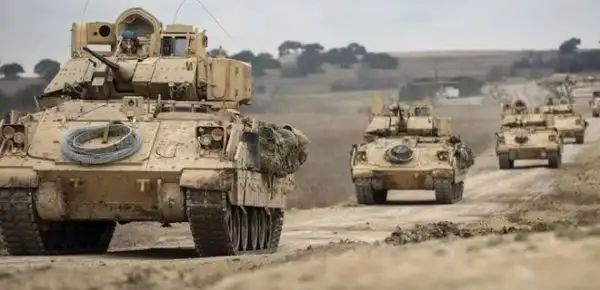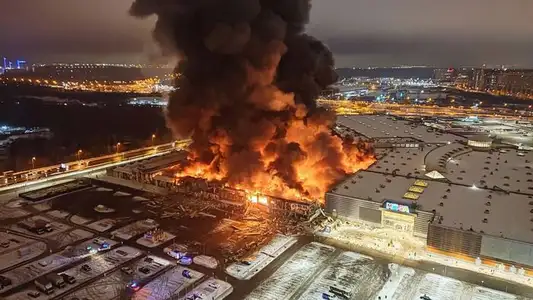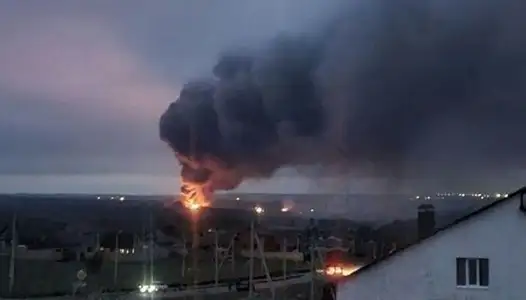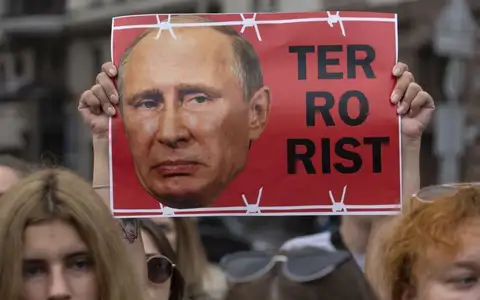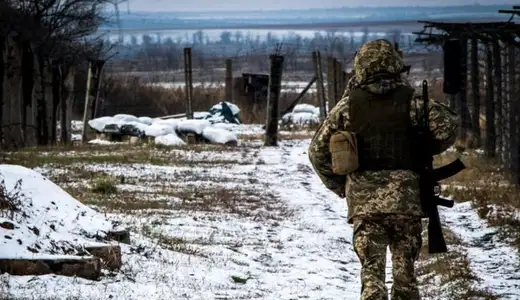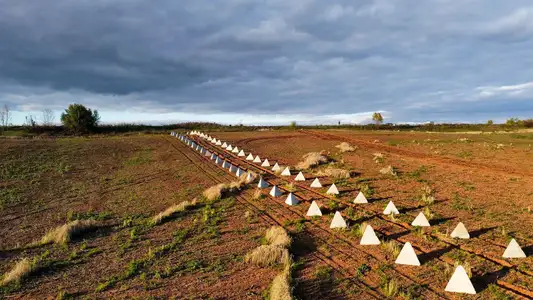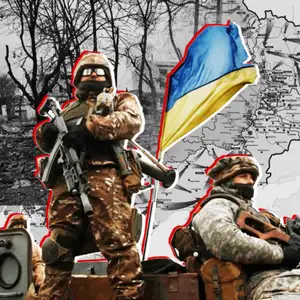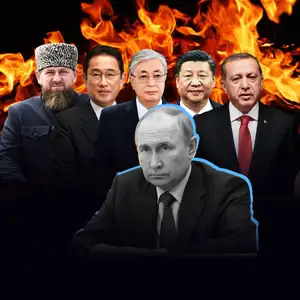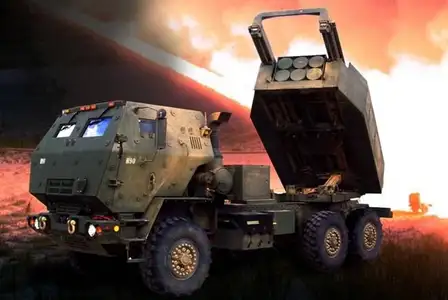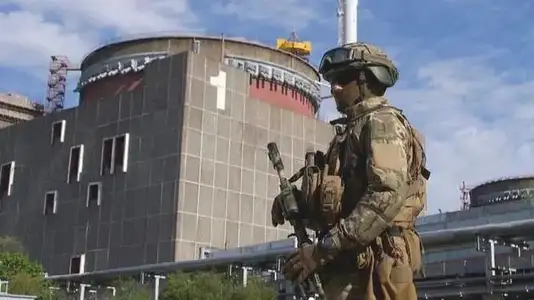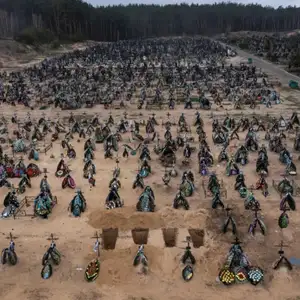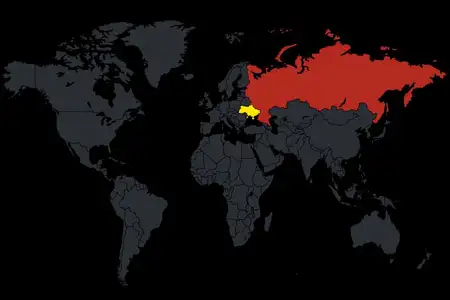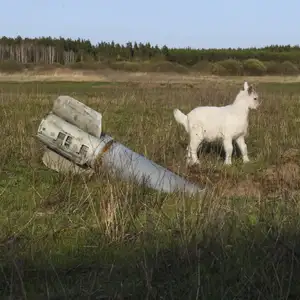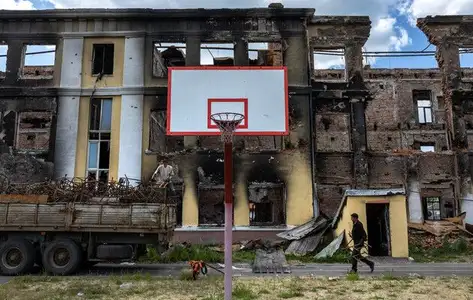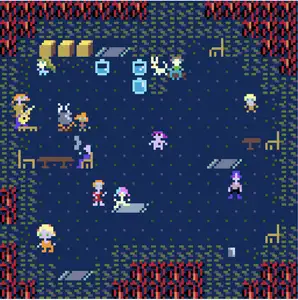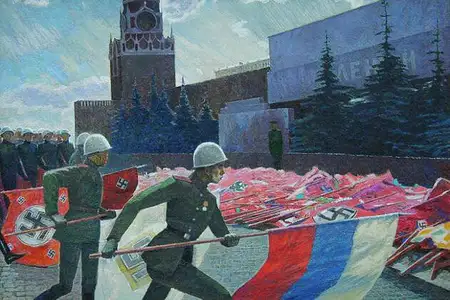Damaged Kakhovka HPP: a horrific consequence of Russian aggression
On June 6, we were all shocked by the news of the explosion and destruction of the Kakhovka hydroelectric power plant dam in the Kherson region. However, since the plant had become an object that the Russians could use for their terrorist purposes since the first days of the full-scale war, such a disaster could have been expected even earlier.
This man-made disaster is one of the largest in the world in recent decades. Much has been said and will be said about the long-term consequences of the destruction of the hydroelectric power plant for people and the environment.
But today, we would like to focus on the short-term consequences of this event, including how it may affect the further course of military operations. And also, to prove that the responsibility for the tragedy lies entirely with the aggressor country.
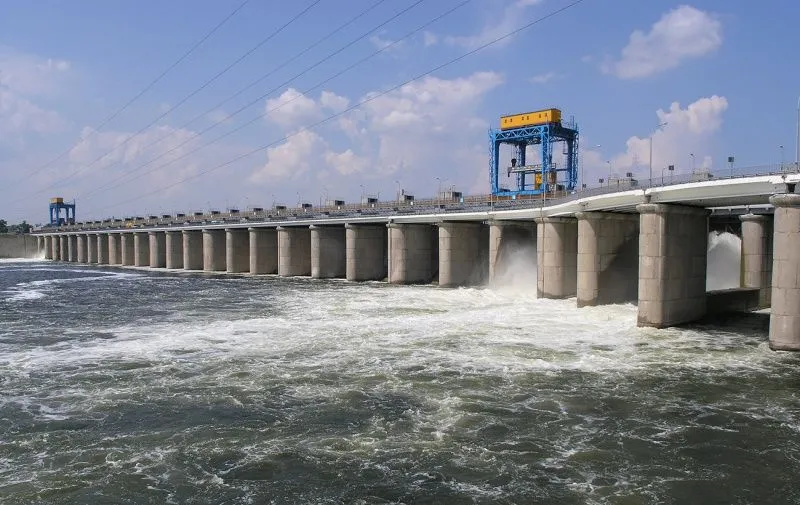
This is how the Kakhovka HPP dam looked like
Kakhovka HPP as the most important hydroelectric power plant in the south
Ukraine's main river, the Dnipro (the fourth longest river and the third largest in terms of basin area in Europe), stretches for 981 km within Ukraine, of which only 100 km remain in their natural state. In Soviet times, the river was actually transformed into a cascade of reservoirs to build six hydroelectric power plants (Kyiv, Kaniv, Kremenchuk, Kamianske, Dnipro, and until June 6, 2023 – Kakhovka). All HPPs are part of Ukrhydroenergo company.
Thus, the Kakhovka hydroelectric power plant (commonly the Kakhovka Dam), built in the 1950s, was the sixth run-of-river power plant located downstream of the Dnipro River. The plant was located (as sad as it is to talk about it in the past tense...) in the south of Ukraine, 5 km from the town of Nova Kakhovka and 30 km from the regional center, the city of Kherson.

The HPP was occupied by the Russian troops from the first days of the full-scaled invasion
The hydroelectric power plant complex performed a number of important tasks, and its destruction will have (and already has) devastating consequences:
- The dam destroyed by the Russians was 447 meters long and had 28 spillway gates. First of all, it was a key structure in the hydroelectric power plant. The destruction of the plant will affect the already difficult energy situation in Ukraine.
- The dam crossed the Dnipro River and held back a huge amount of water in the Kakhovka Reservoir, which is estimated to be more than 18 cubic kilometers. As a result of its breach, more than 20 settlements on both banks of the Dnipro have already been flooded with varying degrees of intensity. The consequences for the environment will also be catastrophic, as it will take years to restore the destroyed ecosystem.
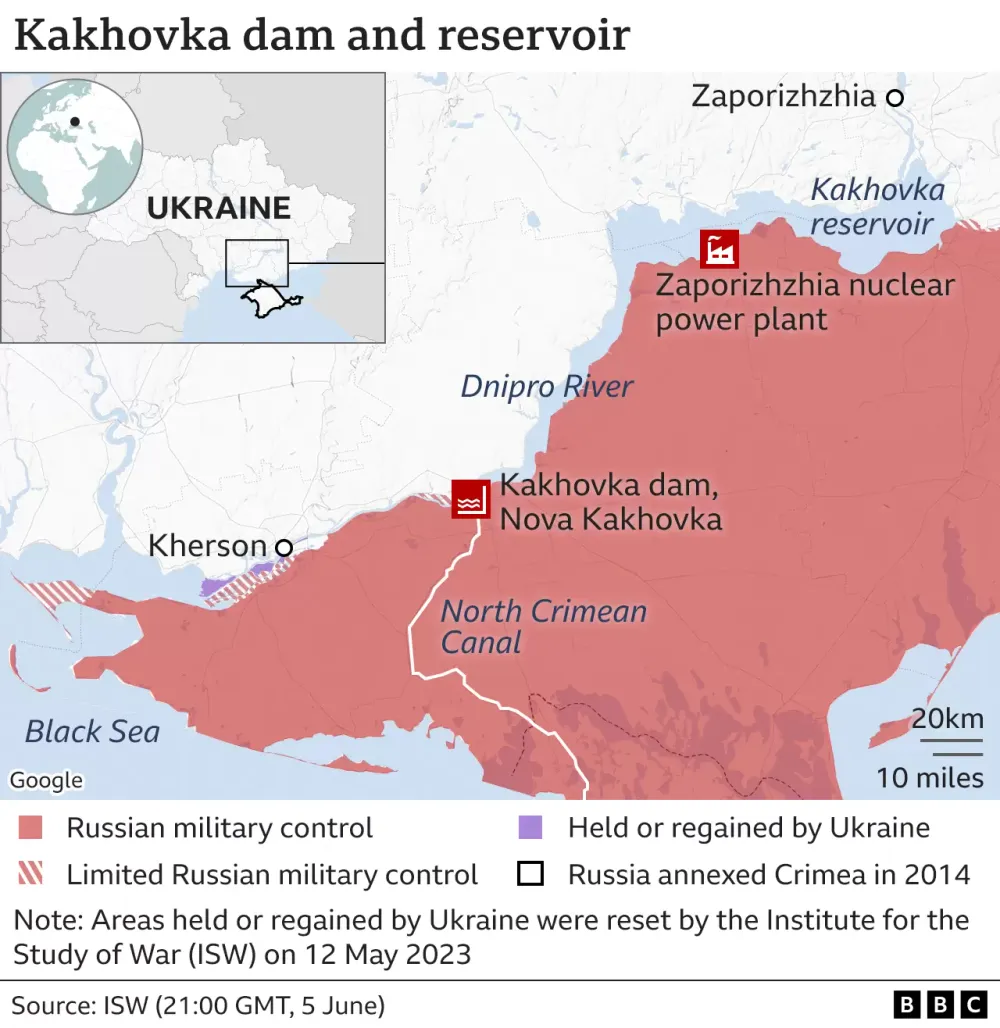
- The dam was used in the irrigation canal system. The explosion of the Kakhovka HPP will leave a large number of fields without irrigation. The left bank of the Kherson region will be severely affected, as these areas were most dependent on the water provided by the hydroelectric power plant. Fields in Zaporizhzhia and Dnipro regions will also be affected. In total, more than 500,000 hectares of land will be left without irrigation. It will be extremely difficult to restore agriculture in these areas after de-occupation.
- In addition, the dam was strategically important because it connected the right and left banks of the Dnipro River. There were road and railroad bridge crossings through the hydraulic structures.
- Water from the Kakhovka Reservoir is necessary for the operation of the Zaporizhzhia Nuclear Power Plant (ZNPP), which is located nearby in occupied Enerhodar. For the second year in a row, the Russians have been using this largest nuclear power plant in Europe for nuclear blackmail. And now the uncontrolled decline in the water level in the reservoir poses additional threats to the plant, as water is needed to supply the turbines and safety systems.
- The reservoir is no less important for the occupiers, as the dam played an important role in providing water to the occupied Crimea. After its destruction, problems with water supply have already begun on the peninsula and they will only increase.
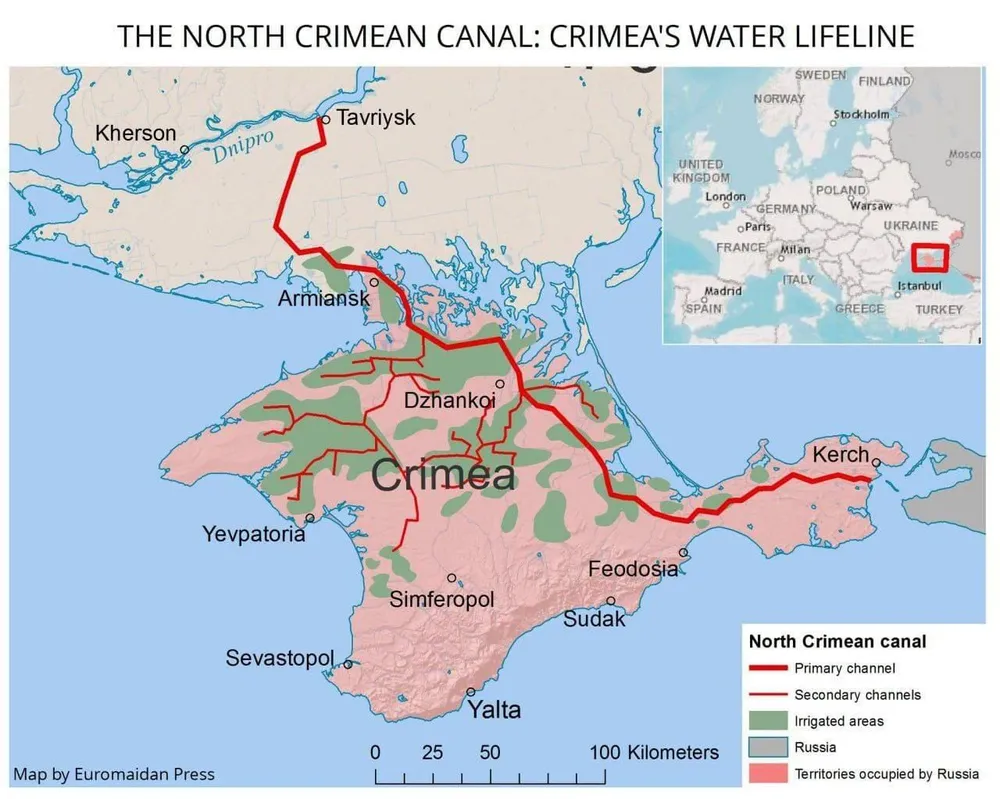
We warned the world – and so it happened
Because of the importance of the dam, the Ukrainian side has been calling it a potential target for the enemy since the beginning of Russia's full-scale invasion. After the liberation of Kherson in the fall of 2022, Ukrainian intelligence learned that the occupiers had planted explosives inside the dam. There was also evidence of damage to the dam. Instead, the Russian side accused the Armed Forces of Ukraine of allegedly firing missiles at the facility.
President Volodymyr Zelensky warned the Russians against the explosion.
“I want to warn everyone who makes certain decisions in Moscow. Any attempt you make to blow up the Kakhovka hydroelectric power plant, flood our territory and dehydrate the Zaporizhzhia nuclear power plant will mean that you declare war on the entire civilized world,” he said in November.
In addition, Zelensky insisted that an international observation mission arrive at the Kakhovka HPP. This was not done.
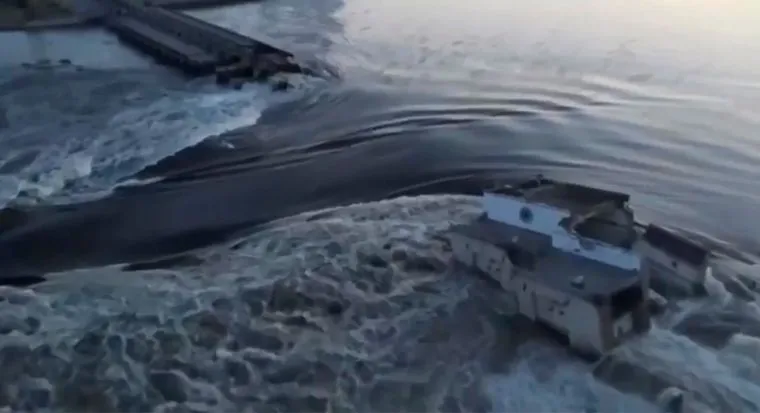
And so, on June 6, what the president and Ukrainian intelligence warned about, happened. At night (around 2:30 a.m.), the dam collapsed and tons of water, that had previously been used for the benefit of people, burst out of the huge reservoir and began to wash away entire settlements and destroy the lives and destinies of thousands of people, whom they had previously served.
As early as 9 a.m., Ukrhydroenergo officially announced that the Kakhovka HPP had been completely destroyed as a result of the explosion of the engine room from the inside. The station is not subject to restoration.
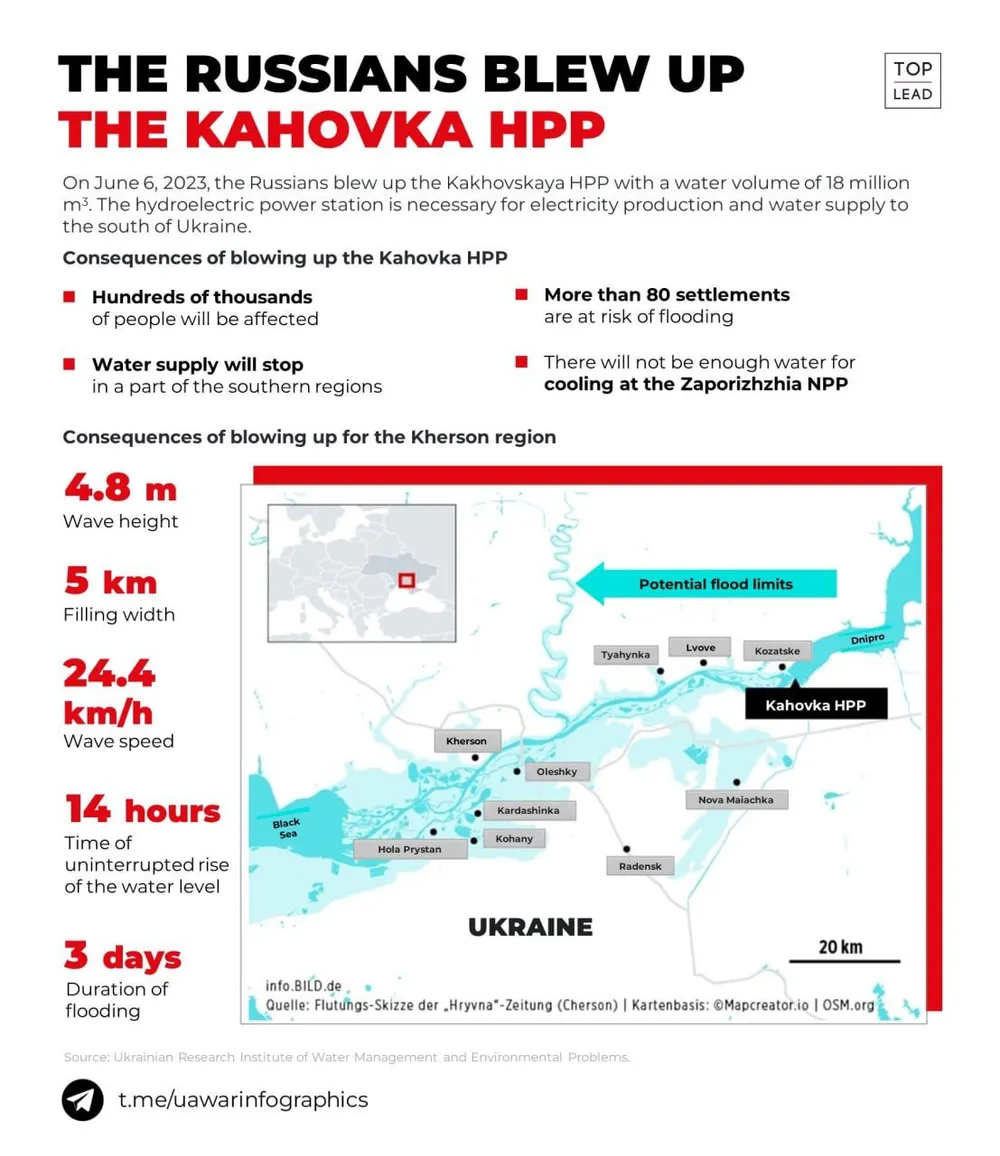
As of June 7, more than 20 settlements on the left and right banks, as well as several districts of the city of Kherson, were completely or partially flooded. A total of 80 settlements are under the threat of flooding. In Kherson region, 1700 people have been evacuated from the flooded areas as for now. The water level is expected to decrease after June 7.
The most critical situation is on the left bank of the Kherson region, which is occupied by Russians. Many houses are flooded, and people are fleeing on the roofs, unable to leave due to the lack of boats. In particular, the town of Oleshky is almost completely under water. According to local residents, the occupiers not only do not help them with evacuation, but also impede it. This is another crime of the aggressor country.
Who is responsible for the disaster?
Many Ukrainians irritated by the fact that some reputable Western media covered the disaster as a kind of objective event that allegedly had no direct perpetrators or they were currently unknown. Instead, it is critically important for us, Ukrainians, that everyone who speaks about this tragedy articulates that the responsibility for it lies with the Russian Federation.
While there is no reliable data and facts, experts have different opinions on the DIRECT causes of the dam breach. Some believe that it was the result of a remote-controlled detonation of explosives that had been planted inside the dam earlier (as reported by intelligence and Zelensky in the fall). The New York Times, based on the assessment of several experts, also concludes that the most likely cause of the destruction of the Kakhovka hydroelectric power plant is an explosion from within.
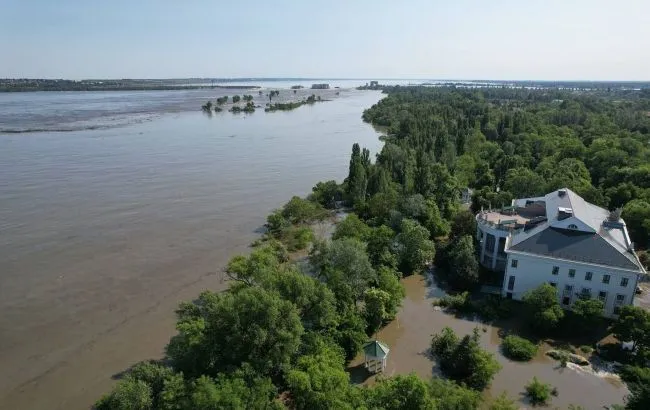
The occupied town of Nova Kakhovka
Other observers suggest that the breach occurred as a result of a combination of damages to the dam combined with deliberate raising of the reservoir's water level.
We cannot and will not attempt to draw conclusions about the MECHANISM of the dam breach, because there is really too little data available. We will leave this matter to a future investigation. Eventually, we will know all the details of Russia's war crimes against Ukraine and the Ukrainian people, no matter how hard the occupiers try to cover their tracks.
However, it is much easier for us to assess the motivation of both sides. As for the Ukrainians, their motivation is not only zero, it is negative. The Ukrainian leadership would not have committed such a heinous crime against its people and country, even if such an action would have guaranteed them significant success on the battlefield.
In addition, the Armed Forces of Ukraine (AFU) simply did not have the physical capability to blow up the dam. This would require either a huge amount of explosives, which would have to be placed in the middle of the dam, or a massive, simultaneous bombardment with missiles of a certain type. Even hypothetically, neither was possible, as the plant has been under the full control of the occupiers for 15 months.
Instead, the Russian side really had a motivation: to deter the Ukrainian counteroffensive.
However, from a military-strategic point of view, the dam breach does not have a significant advantage for the Russian side at the moment. First, Ukraine did not plan a large-scale counteroffensive on this particular sector. Secondly, the left bank (controlled by the occupiers) is lower than the right bank, and therefore, it is now suffering more from flooding. So, the occupiers have harmed themselves.

In general, the result of the dam breach is that neither side will be able to conduct active hostilities in this area.
Military expert Serhiy Grabsky is sure that the disaster will not affect the counteroffensive as such. According to him, it will cause problems for the Russian occupiers, as the water will flood their fortifications on the left bank.
“This will not affect our (Ukraine's - ed.) offensive actions. Because you have to understand, based on the situation, the configuration of the front line, that no one was going to carry out any offensive actions to force the Dnipro, for example. Because this is a complicated operation. The enemy deliberately shot itself in the foot,” he said.
However, according to observers, there is a more global sense for the Russians – to create a critical situation, in general, that would force the Ukrainian leadership to distract from the counteroffensive itself and focus on the disaster relief. First of all, to rescue and evacuate people.
So, of course, large forces and resources are now being diverted to the aftermath. And these are additional obstacles for Ukraine to conduct successful counteroffensive actions. After all, they already require enormous material, logistical and coordination efforts and diligent preparation.
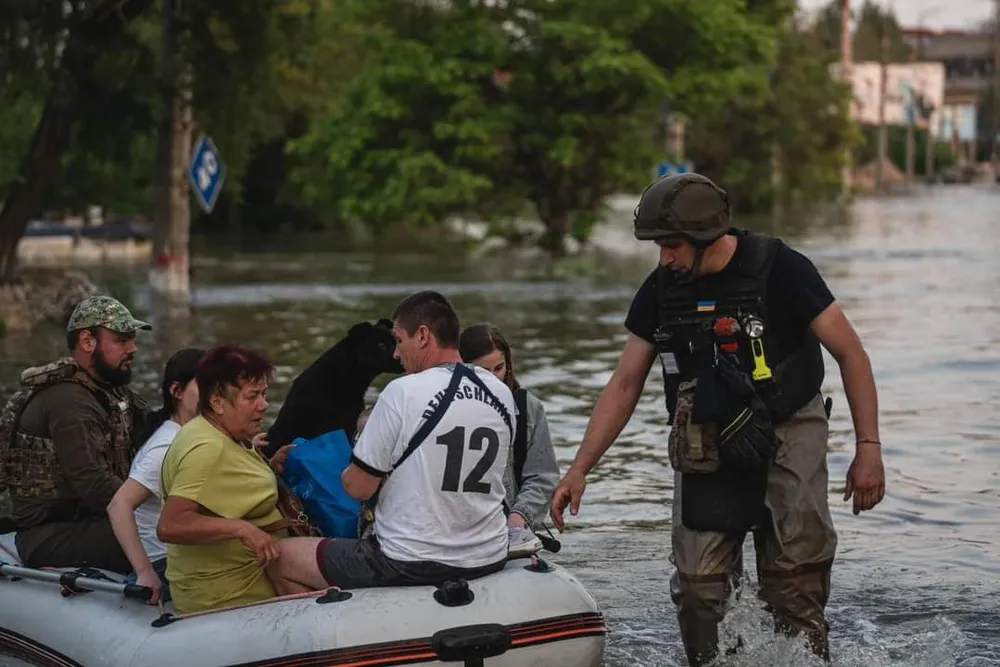
So, we do not think it would be wrong to conclude that, globally, Russia benefited from the dam collapse. In addition, there are a number of events and facts that give us reason to believe that the destruction of the dam was a carefully planned operation by Russian troops.
1. First of all, let's not forget the basic fact: if Russia had not invaded the territory of Ukraine, nothing like this would have happened.
2. Based on our previous conclusions about the motivation of the occupiers, these were the “right” days for the dam to be breached. After all, according to reports from various sources, the long-announced Ukrainian counteroffensive had just begun on those days.
3. Even when there are armed conflicts, such strategically important facilities as power plants (especially nuclear power plants) are usually excluded from hostilities. Demilitarized zones are created around them and neither party to the conflict can use them for military purposes. But this rule is valid when the parties adhere to the customs of warfare. And this is not our case.
Russia has been repeatedly asked to organize demilitarized zones during these 15 months, both by Ukraine and the international community. This applies to both the HPP and the Zaporizhzhia NPP.
Instead, Russia has used (and continues to use) these facilities (the destruction of which could lead to catastrophic consequences) as MILITARY OBJECTS. For example, from the territory of ZNPP, the Russian military fired at the territories controlled by Ukraine, and the AFU were unable to fire back in order not to cause damage to the NPP (although the occupiers have repeatedly staged shelling of the plant, accusing Ukraine of doing so). In addition, the Russians are storing military materials on the territory of the plant, which is also a violation of all existing norms.
The same was true of the Kakhovka HPP. They would say: “we can do anything here, but you can't shoot at us, because otherwise the dam will break and flood everything”.

4. The dam did really have damage caused in the period of active hostilities during the liberation of the right bank of the Kherson region in the fall. But the Russian occupiers have done nothing to repair it over the past few months. On the contrary, it seems that the Russian side was not interested in PREVENTING this disaster at all.
5. And now not speculation, but bare facts! A week before the disaster, on May 30, the Russian government issued and published a resolution that allowed not to investigate accidents at hazardous facilities that occurred as a result of military operations and terrorist attacks, including in the occupied Ukrainian territories that Russia considers its own. Paragraph 10 of the resolution is the most interesting for us:
“Until January 1, 2028, technical investigation of accidents at hazardous production facilities and accidents at hydraulic structures that occurred as a result of military actions, sabotage and terrorist acts shall not be conducted”.
This means that from now on, the responsible persons in the occupied territories have no obligation to identify and eliminate violations or damage that could lead to an accident, in particular at hydroelectric power plants, and to investigate the causes of such accidents.
You must admit that this is cynicism of the highest level!
6. And that's not all. The Washington Post journalist Evan Hill drew attention to such a fact:
“Prior to whatever happened overnight, the Kakhovka Reservoir had reached unprecedentedly high levels. This was likely due to Russian forces keeping too few gates open, the NYT reported, just months after letting the reservoir sink to historic lows,” he wrote on Twitter and published the corresponding graph.

That is, some time before, the water level in the reservoir was deliberately lowered (many gates were opened), and shortly before the dam collapsed, the water level rose as much as possible (many gates were closed). The more water, the more pressure on the dam. Together with the damage, this could have led to or contributed to the collapse. Of course, we cannot rule out the possibility of an internal explosion, too.
In any case, it can be argued that this is an artificially constructed disaster by the Russians, the purpose of which is to divert the attention of the Ukrainian leadership from the counteroffensive.
No matter what new facts and data we learn in the future, one thing is certain: it was a series of aggressive actions by the Russian Federation that led to the dam collapse. And the fault, as well as the responsibility, lies entirely with the aggressor country. Therefore, we would like to see the foreign media clearly articulate this point. At the same time, we are grateful to all Western leaders who express support for Ukraine and emphasize Russia's responsibility in this regard.
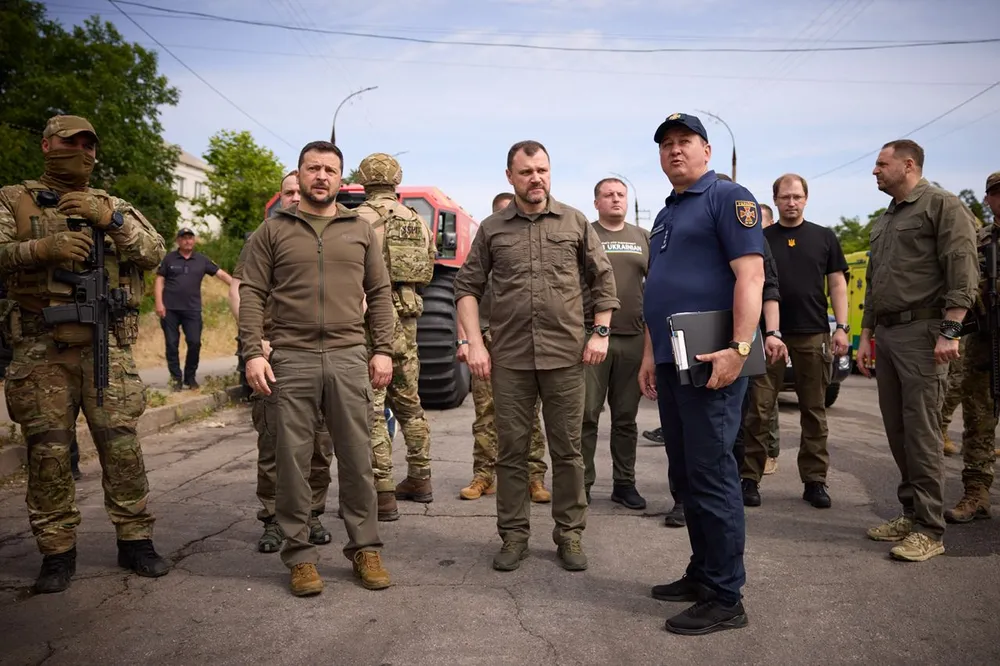
What to do next?
The terrible disaster, the consequences of which Ukraine will have to deal with for years, if not decades, gives us several important signals.
- It is now clear that we can expect anything from the Russians and their insane leader. In their cruelty and hatred, and at the same time because of the dire situation on the frontlines, they will stop at nothing. It is important that this fact is understood not only in Ukraine but also in other countries. And that it may affect them directly in the future.
- German Chancellor Olaf Scholz called the explosion at the Kakhovka hydroelectric power plant a “new dimension” of Russia's war against Ukraine. We fully agree with this. That is why we expect even more effective and efficient material assistance from our Western partners: either through new sanctions or by supplying Ukraine with more weapons or expanding their range.
- And we, in turn, continue to do our job and make efforts to liberate our land from the occupiers. “There will be victory. The terrorists will not be able to stop Ukraine with water, missiles, or anything else,” Volodymyr Zelensky said. We are confident that, whatever the challenges, every Ukrainian thinks the same way.
Anastasiya Glotova



